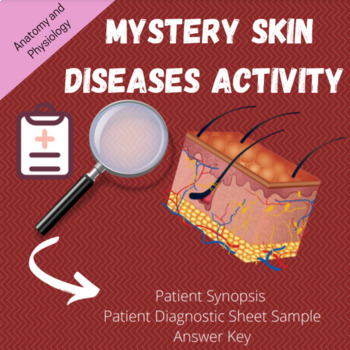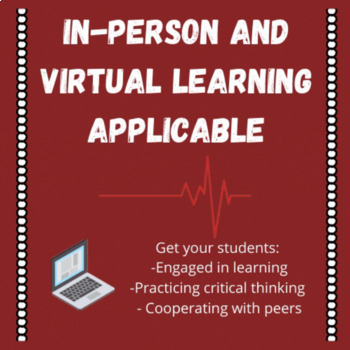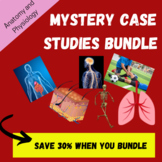Anatomy and Physiology: Mystery Skin Diseases Case Study Activity
- Word Document File
- Internet Activities
What educators are saying
Also included in
- This activity is a BUNDLE activity of the following resources: Mystery Skin Diseases Mystery Nervous System DiseasesMystery Skeletal System Diseases Mystery Digestive System Diseases Case StudyMystery Athletic Injuries Case StudyMystery Respiratory System Case Study It is designed for groups to workPrice $12.60Original Price $18.00Save $5.40
Description
This activity is designed for groups to work together to solve the medical mysteries skin diseases of 8 patients. It can be adapted and modified for smaller groups or even individual students. This activity will work as an in-person resource or a virtual learning resource. Students open the word document and the directions are listed at the top of the page for them to read. This activity is great for beginning steps in research and mimics what a lot of doctor's have to do in order to correctly diagnose patients.
Students read over each patient's synopsis and then create their own diagnostic sheet. A sample diagnostic sheet is attach to the lesson on page 4 for students to use as a guide. They do not have to use the diagnostic sheet, but it may be helpful to organize their thoughts. Can they solve the mystery?
Topics include: Vitiligo, Psoriasis, Age spots, Chicken Pox, Herpes, etc.
CAUTION: One problem uses sexual content to express disease through the mystery patient.
REFERENCES INCLUDED
Materials Need for Lesson:
- Student Laptop (1:1) with internet and Word access
- Teacher Laptop with internet access
- Method to display document to students in classroom
Included in Lesson
- Digital Copy of lesson in Word document
- Answer Key included with highlighted hidden clues
Click HERE to shop in My Store
For Updates, Follow me on Pinterest
Looking for the BUNDLE of Mysteries? Check it out: Mystery Diseases Bundle
Check out this line of individual mystery case study activities: Mystery Skin Diseases, Mystery Nervous System Diseases, Mystery Skeletal System Diseases, Mystery Digestive Disease Activity, Mystery Athletic Injuries case study
Looking for a year-long activity? 180 Year-Long Critical Thinking Anatomy Questions
Check out this Integumentary System Activity: Skin Stations
Looking to earn TPT credit? Leave a review and follow guidelines on this page TPT Credit
Check out my TOU





